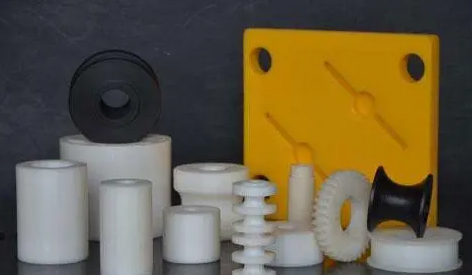ㆍPrivacy: We respect your privacy. Here you can find an example of a non-disclosure agreement. By submitting this form, you agree to our terms & conditions and privacy policy.
We use cookies to enhance your browsing experience, provide personalized content and analyze our traffic. By clicking "Accept", you agree to our use of all cookies.
Views: 5 Author: Site Editor Publish Time: 2024-04-15 Origin: Site









Polyethylene molding stands as a cornerstone in modern manufacturing, offering unparalleled versatility and reliability in shaping various products. This comprehensive guide delves into the capabilities of polyethylene molding and the crucial role of quality control measures in ensuring impeccable results.
1. Understanding Polyethylene Molding
Polyethylene molding is a manufacturing process that involves melting polyethylene resin and injecting it into a mold cavity to create a desired shape. It is widely used across industries for producing a diverse range of products, from packaging materials to automotive components.
2.Unveiling the Capabilities
Versatility: Polyethylene molding caters to intricate designs and complex geometries, making it ideal for a wide array of applications.
Cost-Effective: The process offers cost-efficiency, especially in large-scale production runs, due to its rapid cycle times and minimal material wastage.
Material Compatibility: Polyethylene is compatible with various additives and colors, allowing for customization according to specific requirements.
Consistency: It ensures consistent part quality and dimensional accuracy, crucial for meeting stringent industry standards.
3. Ensuring Quality Control
Quality control is paramount in polyethylene molding to uphold product integrity and customer satisfaction. Key aspects include:
Material Selection: Choosing high-quality polyethylene resin with the right properties for the intended application.
Process Monitoring: Implementing real-time monitoring of molding parameters such as temperature, pressure, and cycle times to maintain consistency.
Inspection Techniques: Employing advanced inspection methods like dimensional analysis and visual inspection to detect defects early in the production process.
Quality Assurance Protocols: Implementing stringent quality assurance protocols and certifications to adhere to regulatory standards and industry best practices.
4. Advancements in Polyethylene Molding
The continuous advancements in polyethylene molding technology have led to innovations such as:
Multi-Cavity Molds: Increasing production efficiency by molding multiple parts simultaneously.
Gas-Assisted Molding: Enhancing part strength and reducing material usage by injecting gas into the mold cavity.
In-Mold Labeling (IML): Integrating labels or graphics directly into the molded part during the molding process, eliminating post-molding labeling steps.
5. Applications Across Industries
Polyethylene molding finds extensive applications across diverse industries, including:
Packaging: Manufacturing containers, bottles, and packaging films.
Automotive: Producing interior and exterior components, fuel tanks, and under-the-hood parts.
Medical: Creating medical device components, surgical instruments, and laboratory equipment.
Consumer Goods: Crafting household products, toys, and appliances.
6. Future Trends and Sustainability
The future of polyethylene molding is aligned with sustainability goals, with a focus on:
Recyclability: Developing recyclable polyethylene materials to minimize environmental impact.
Bio-Based Resins: Exploring bio-based polyethylene options derived from renewable sources.
Energy Efficiency: Implementing energy-efficient molding processes and equipment for reduced carbon footprint.
In conclusion, polyethylene molding's remarkable capabilities and stringent quality control measures make it a cornerstone of modern manufacturing. Embracing the latest advancements and sustainability practices ensures its continued relevance and impact across industries.
This draft covers the key aspects of polyethylene molding, including its capabilities, quality control measures, applications, and future trends. Let me know if you need any modifications or additional information!

